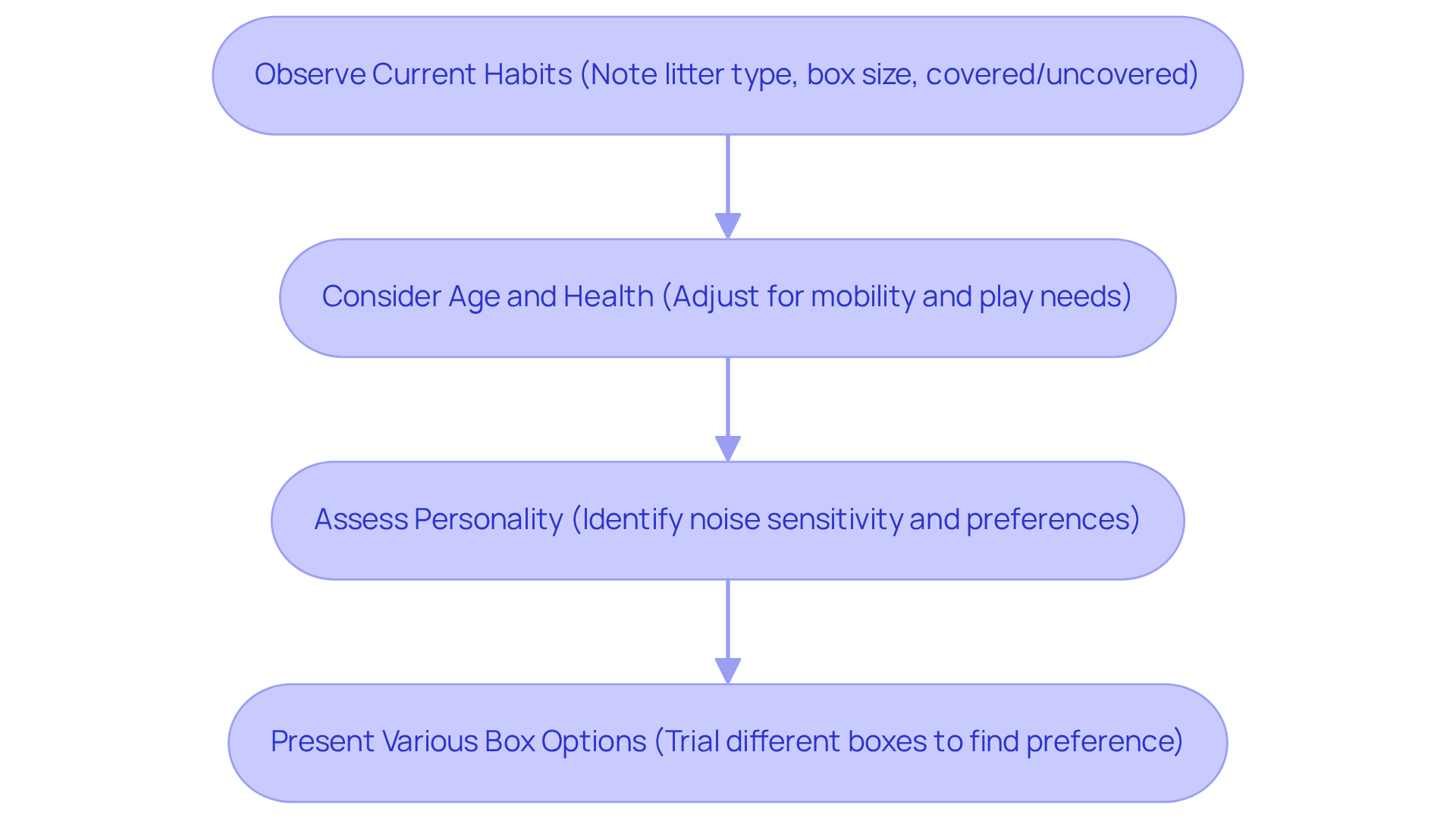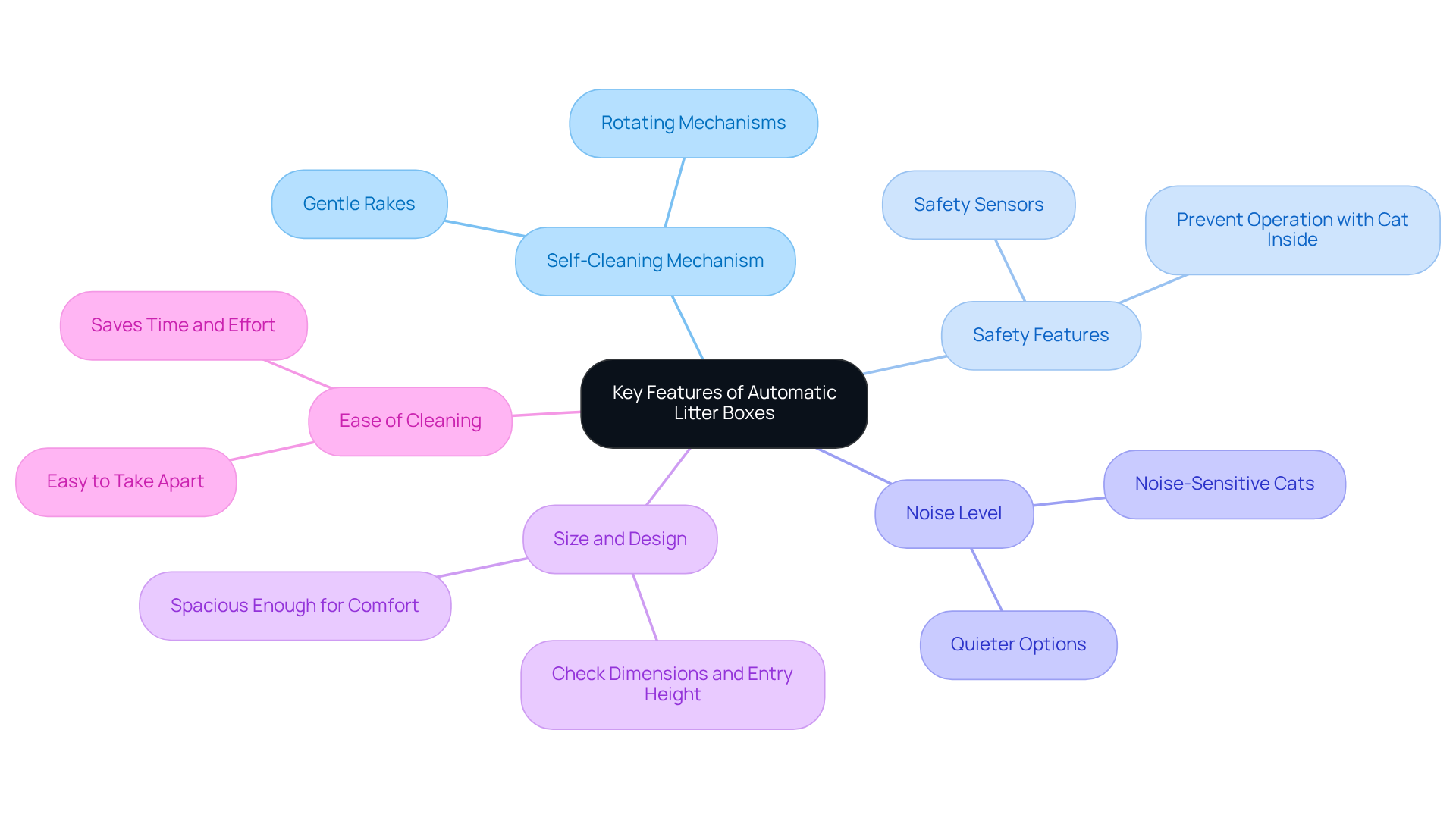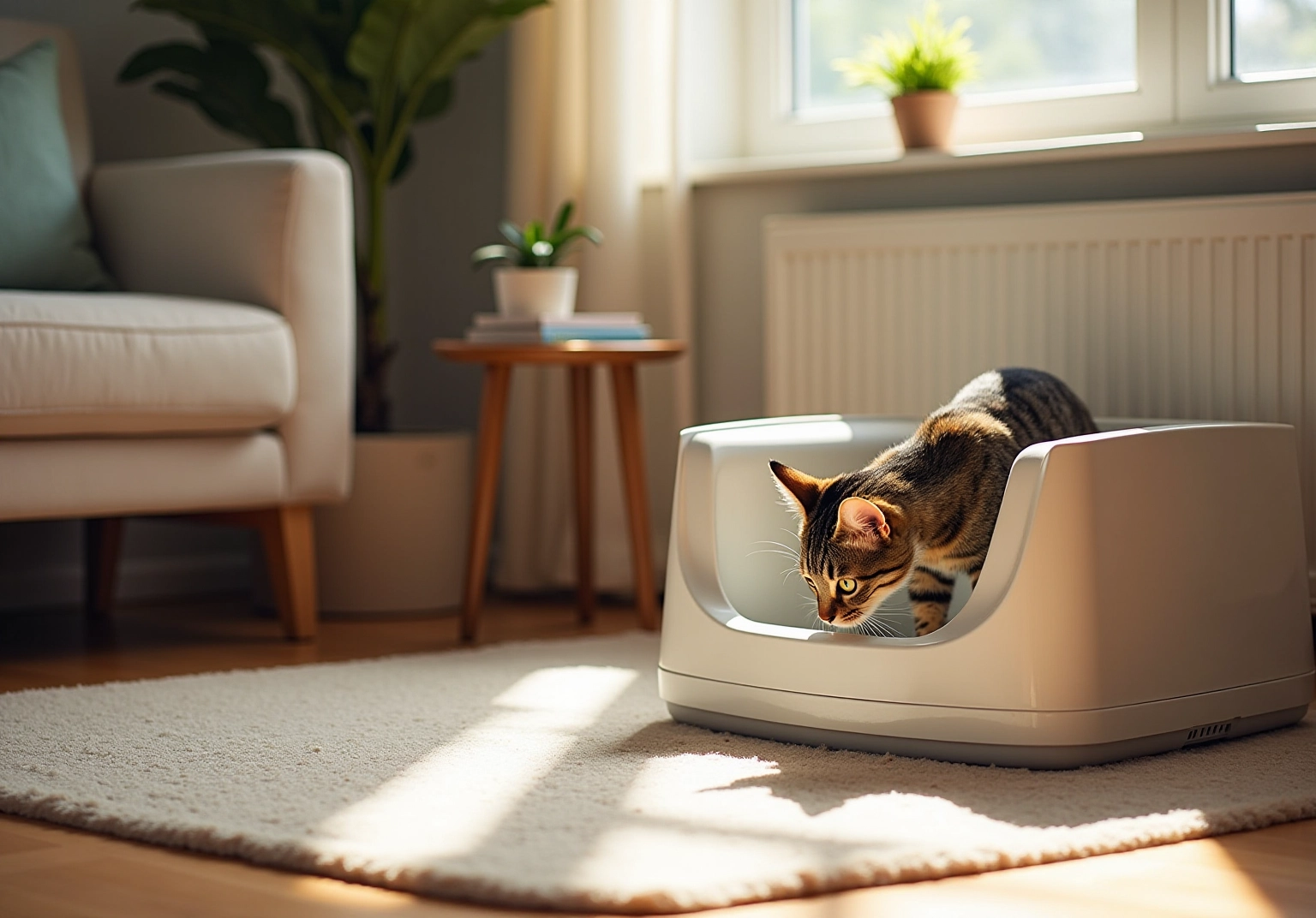4 Steps to Choose the Best Automatic Litter Box
Overview
Choosing the best automatic litter box for your furry family member can feel overwhelming, but it doesn’t have to be. Begin by understanding your cat’s unique needs and preferences. This initial step is crucial in ensuring their comfort and happiness. Next, take the time to evaluate the key features of various models. Look for aspects like safety and noise levels, which can significantly impact your cat’s experience.
Conducting thorough research and comparisons is essential. Read reviews and consult expert opinions to gather insights that will guide you toward a suitable choice. Remember, this decision not only enhances your cat’s quality of life but also contributes to a nurturing environment in your home. Ultimately, making an informed purchase will lead to a happier, more contented pet, and that is what every pet owner desires.
Introduction
Choosing the right automatic litter box for your beloved feline can indeed feel overwhelming, especially with so many options available today. It’s essential to understand your cat’s unique needs and preferences, as these factors directly impact their comfort and well-being.
Have you ever considered that a litter box, which seems perfect, might disrupt your cat’s routine? This guide will walk you through the vital steps to help you navigate the complexities of selecting an automatic litter box that not only meets practical requirements but also enriches the lives of both you and your furry family member.
Identify Your Cat’s Needs and Preferences
-
Begin by observing your cat’s current waste box habits. Take note of their preferred litter type, box size, and whether they enjoy the comfort of covered or uncovered boxes. This understanding is the first step in creating a nurturing environment for your furry family member.
-
Next, consider your cat’s age and health. Older felines or those with mobility challenges may benefit from a lower entry point, while younger ones often appreciate a larger area to dig and play. Tailoring their space to their needs shows how much you care.
-
Assessing your cat’s personality is also important. Some cats are more sensitive to noise and may prefer quieter options, while others might not mind the sounds of the best automatic litter box during its cleaning cycle. Recognizing these preferences can enhance their comfort and happiness.
-
If feasible, present your cat with various kinds of boxes for waste. This trial can help you determine which option they favor before making a conclusive choice. Remember, your goal is to create a space that feels safe and welcoming for your beloved companion.

Evaluate Key Features of Automatic Litter Boxes
- Self-Cleaning Mechanism: Explore the best automatic litter box that automatically sifts and eliminates waste, enabling you to spend more quality time with your furry family members. Some options feature gentle rakes, while others utilize rotating mechanisms for a thorough clean.
- Safety Features: It’s essential to choose a litter box equipped with safety sensors to prevent operation while your cat is inside. This thoughtful feature is crucial for ensuring your pet’s safety and avoiding accidents.
- Noise Level: Consider the noise level of the cleaning cycle. Quieter options are especially important for noise-sensitive cats, as they help maintain a calm and nurturing environment.
- Size and Design: The litter box should be spacious enough for your cat to move comfortably. Take a moment to check the dimensions and entry height to ensure it perfectly suits your cat’s size and needs.
- When considering ease of cleaning, look for the best automatic litter box that is easy to take apart and clean. This will save you time and effort in upkeep, allowing you to focus on enjoying precious moments with your beloved pet.

Research and Compare Available Options
-
Online Reviews: Begin your journey by exploring reviews from fellow cat owners. Websites like Consumer Reports and pet care blogs often share detailed comparisons and heartfelt user experiences. As one passionate pet care blogger wisely noted, “Reading reviews is crucial; they can reveal hidden issues with a product that you might not consider at first.” This insight can help you make informed choices for your furry family members.
-
Brand Reputation: Take the time to research brands that are celebrated for their quality and customer service. Seek out companies that stand behind their products with warranties or satisfaction guarantees. Recent statistics show that brands with strong reputations in the pet care industry tend to enjoy higher customer loyalty and satisfaction rates, ensuring that you feel confident in your choices.
-
Price Comparison: It’s wise to compare prices across various retailers. Often, the same product can be found at different price points, so exploring your options can lead to significant savings. A study revealed that consumers can save up to 30% by comparing prices before making a purchase, allowing you to invest more in the well-being of your pets.
-
Features vs. Cost: Consider the features you truly need against the cost. Sometimes, a pricier option can lead to savings over time, such as reduced waste usage or less frequent cleaning. For instance, Pawscout’s case study highlights how investing in quality products can foster better long-term outcomes for pet owners, reminding us of the importance of choosing reliable brands that care for your pets as much as you do.

Make an Informed Purchase Decision
-
Final Evaluation: Take a moment to reflect on your notes regarding your cat’s preferences, the unique features of the waste containers you’ve explored, and the pros and cons of each option. This step is essential in ensuring a nurturing environment for your furry family member.
-
Consult with Experts: If you find yourself uncertain, don’t hesitate to reach out to pet care professionals or veterinarians. Their insights can provide valuable recommendations tailored to your cat’s specific needs, helping you feel more confident in your choice.
-
Acquire: Once you’ve made your decision, it’s time to acquire the litter box from a reputable retailer. Be sure to understand the return policy, just in case it doesn’t work out as you hope.
-
Setup and Introduction: After receiving the litter box, follow the manufacturer’s instructions for setup. Introduce your cat to the new box gradually, allowing them to explore it at their own pace, ensuring they feel comfortable and secure in their new space.

Conclusion
Choosing the right automatic litter box is essential for understanding the unique needs and preferences of your furry family members. By tailoring the selection process to your pet’s habits, health, and personality, you can create a nurturing environment that promotes their well-being and happiness.
Key steps in this journey include evaluating essential features such as:
- Self-cleaning mechanisms
- Safety sensors
- Noise levels
Additionally, comparing various options based on online reviews and brand reputation can provide valuable insights. By conducting thorough research and making informed decisions, you can confidently select a litter box that suits both your lifestyle and your pet’s needs.
Ultimately, investing time in understanding your cat’s preferences and the available options will lead to a more enjoyable experience for both you and your feline friend. Prioritizing their comfort and safety not only enhances their quality of life but also strengthens the bond between you and your pet. Embrace this opportunity to create a harmonious living space, and remember that the right automatic litter box can significantly improve your daily routine and your cat’s happiness.
Frequently Asked Questions
How can I identify my cat’s waste box preferences?
Start by observing your cat’s current waste box habits, including their preferred litter type, box size, and whether they like covered or uncovered boxes.
What factors should I consider regarding my cat’s age and health when choosing a litter box?
Older cats or those with mobility challenges may need a litter box with a lower entry point, while younger cats might prefer a larger area to dig and play.
Why is it important to assess my cat’s personality when selecting a litter box?
Assessing your cat’s personality helps to determine their sensitivity to noise and other factors, which can influence their comfort and happiness with different types of litter boxes.
Should I provide different types of litter boxes for my cat to try?
Yes, if possible, present your cat with various kinds of boxes to see which one they prefer before making a final decision.
What is the ultimate goal in choosing a litter box for my cat?
The goal is to create a space that feels safe and welcoming for your cat, enhancing their comfort and well-being.







